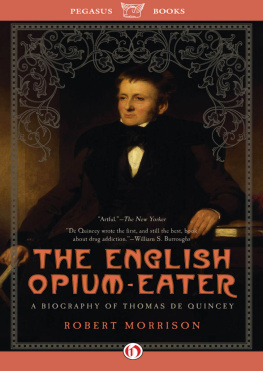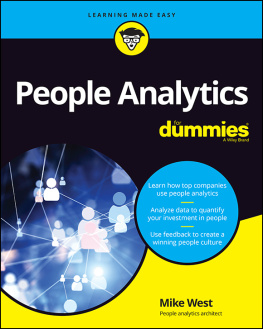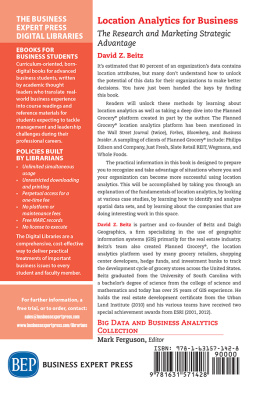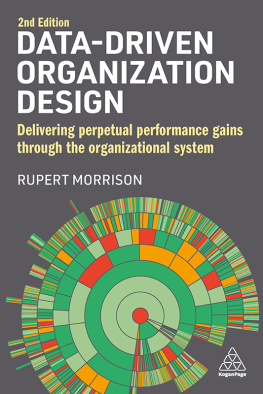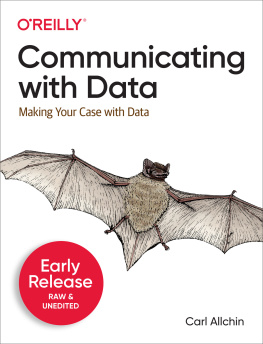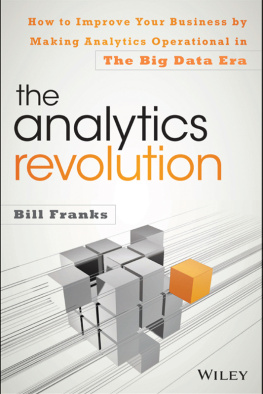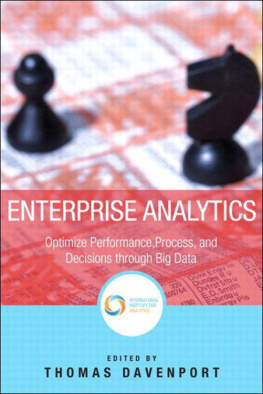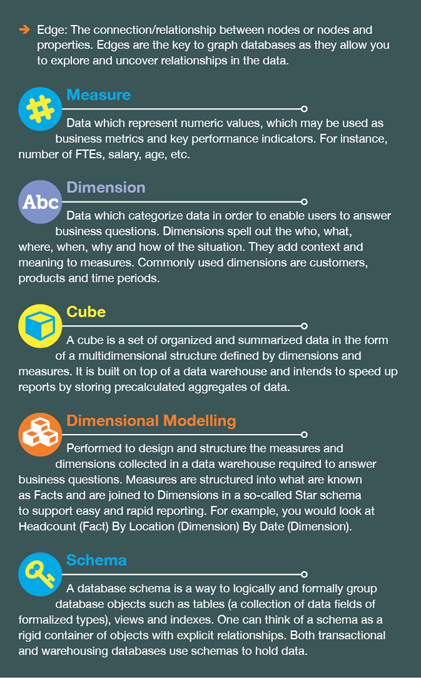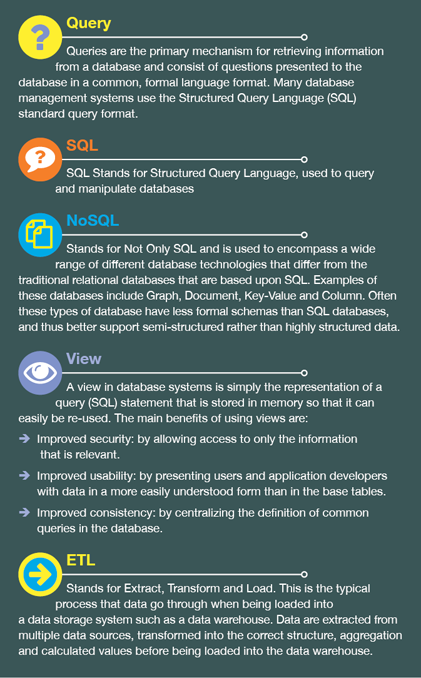R upert Morrison is the CEO of Concentra, one of the fastest-growing analytics firms in the UK and winner of the Technology Innovation Award 2011 in the Sunday Times Tech Track 100. He led the creation of its OrgVue product, an integrated software platform with solutions including: HR analytics, organization design, transition management and strategic workforce planning. It was selected as one of four Gartner Cool Vendors in human capital management from an international field. Created based on experiences helping clients with business transformation, it is revolutionizing the way people design, transform and operate their organizations to sustain competitive advantage.
Ruperts approach combines his experiences of running a fast-growth tech firm alongside a wealth of experience in business transformation, supply chain optimization, and organization design projects. Having studied economics at Erasmus University Rotterdam, he has spent 18 years in consulting, helping organizations around the world. While at Concentra, and before that with A T Kearney, Rupert has worked on projects in a broad range of industries including automotive, FMCG, mining, government agencies, pharmaceutical and private equity.
Rupert grew up on a sheep station in the Wairarapa in New Zealand. He lives in London with his wife and three sons. He has a passion for rugby, which he coaches, and for completing IronMan distance triathlons.
I owe so much to so many.
To my many colleagues who have provided detailed comments, debates, ideas and encouragement. They have supported the refinement and implementation of much of the thinking, teaching me and detailing specific concepts and applying methods in practice. Andy Birtwistle, Ben Marshall, Chris Houghton, Darshan Baskaran, El No, James Don-Carolis, John Candeto, Katelyn Weber, Manish Chauhan, Mike Walker, Nikolay Vaklev, Patrick Gracey, Robert Campbell and Tom Simpkins all significantly contributed to this book.
To the Concentra and OrgVue senior team of Peter Lanch, Adrian Downing, Nick Finch, Weelin Lin, Rodin van der Hart, Jamie Pullar, and William Ingram for their support.
To Anna Triantafillou and Annie Cope for the graphic design. A key theme of the book is the power of visualization, and without their ability to turn my whiteboard and PowerPoint sketches into understandable images a core thrust of the book would have been lost.
To Katy Hamilton, Lucy Carter, Katleen Richardson and Stefan Leszczuk at Kogan Page for their expertise and editing advice and being so flexible in the publishing process.
To A T Kearney and my many mentors and colleagues there for being such a great firm and providing me with years of invaluable learning. Especially Earle Steinberg, Phil Dunne, Charles Davis, Anne Deering, Jonathan Anscombe, Yves Thill, Sean Ritchie, Antti Kautovaara, Judith Orzechowski, Jim Pearce, Matt James, Par Astrom, Steve Whitehead, Steve Fowles, Paul Collins, Chirag Shah and Gautam Singh.
To those who have supported and made Concentra possible. In particular Ben Scott Knight, Richard Thompson and Angus Whiteley for going on the journey, investing and believing. Also to Tom Brown, Goetz Boue and Paul Graville for founding the original software development firm and helping to form Concentra 2.0.
To all my clients who I am unable to mention by name. Thank you for placing your faith in me and for your continued trust and support.
To Chris Barrett for his technical and data vision, ability to transform an idea into reality and his detailed comments and advice. Giles Slinger for his tireless work, edits on every chapter and helping to take the thinking to the next level. Julian Holmes for his detailed comments and in particular expertise on workforce planning and implementation.
Without Will Sheldon I would never have been able to finish this book. Thank you for your editing, rewriting and ensuring every argument, detail and base was covered every time.
To my family: my father who passed 25 years ago and my mother. To Henk and Alexandra, my four brothers and dear sister, my special Uncle Erik, Aunt Marg and dear Gran. To my three gorgeous boys, Hugh, Alec and Peter, who give me a reason to keep going every day.
To my dear wife Vanessa. Everyone who knows me well knows that none of this would have been possible without you. To you, Vanessa, the biggest thanks of all.
1.1
War is ninety percent information.
NAPOLEON BONAPARTE
T oo many leaders treat organization design as an exercise in moving boxes around PowerPoint slides. Too many analysts spend their time in unwieldy Excel contraptions that fail to give an understanding of organizational reality. Too many employees are unclear about what their role in their organization really is. Too much siloed thinking occurs because it is impossible to pull all the elements of the organization together. Too much time is wasted designing and changing organizations, with limited value. I believe the current methods of organization design are falling behind the needs of the modern-day organization. Organizations are struggling to understand where they are, let alone realize their plans and aspirations for the future. I wrote this book because I believe there has to be a better way.
Organizations must adapt to survive. They are a constantly evolving system made up of objectives, processes designed to meet those objectives, people with skills and behaviours to do the work required, and all of this organized in a governance structure. That governance structure goes far beyond the reporting lines of an org chart. It is how people work together and agree on what needs to happen, from day-to-day to year-on-year. It is dynamic, constantly moving over time. The structure must be fluid but you have to maintain an understanding of it. To be understandable you have to make it visual, because if you cant see it then how can you understand it? The organization must create an environment for people to perform, for only when everyone performs to their potential do you have a hope of getting and then sustaining your competitive edge.
Even without the complexities of being part of an organization, people struggle to perform and meet even their most basic objectives. Every year on 1 January millions of people resolve to lose weight and try to get fit. We all know its not rocket science: eat a balanced diet and exercise regularly. And yet 92 per cent of people who make these resolutions will fail to achieve their goals, with over 50 per cent giving them up after just six months. If we struggle as individuals how can we expect to fare when implementing change in organizations where we can be dealing with hundreds to many thousands of people? Its like getting fit: the theory isnt complicated, but putting it into practice is extremely difficult.
I believe that those responsible for ensuring their organizations remain competitive must stop relying on old-fashioned office tools and isolated org charts when defining how they need to organize themselves to meet their strategic ambitions. Not only are the techniques used to create and deliver organization designs outdated, they dont go nearly deep enough for what businesses require. They are superficial and not geared towards execution. How many organization designs are effectively just redrawn org charts? My observation, based on looking at hundreds of designs and organizations, is the vast majority.






